Photography began the long journey to its present state nearly two centuries ago. From the first known photograph taken in 1825 by French inventor Nicéphore Niépce to the current state of the art cameras comprised of many millions of transistors, the journey has been a tumultuous one with regard to photography as an art medium. It was not until the early 20th century that photographs began to appear in art galleries. Photography has since remained the black sheep in the family of visual arts because it is often perceived to be a largely mechanical process, devoid of creative influence. Moreover, until the advent of archival, digital pigment printing, color photographs, with the exception of an obscure process known as Dye Transfer, were not considered to have a sufficient lifespan to be seriously considered by galleries, museums, and collectors. Print longevity was the principle reason why only black and white photographs established a strong foothold in the art community. Yet with the constant evolution of technology, from Ansel Adams’ extensive use of darkroom manipulation to the almost infinite possibilities of computer processing, the creative options for photography have expanded to a degree unimaginable just a few years ago.
Today almost everyone in the developed world is armed with a brush and canvas, to borrow the painter’s parlance. Cell phone cameras have only accelerated this process. The sheer ubiquity of the camera inspires budding creativity in more individuals, I imagine, than any other art form except perhaps music. To be sure, most people simply want to capture a memory or take home a souvenir. But I am always surprised by how many people wielding a camera are genuinely interested in learning the creative aspects of photography. For all of us who are so inclined, this is a revolutionary period, an era where the tools and craft are expanding faster than our imaginations.
From the earliest photograph until just a few years ago, photography remained, in principle, unchanged. It was a chemical process whereby light sensitive materials allowed a projected image to be fixed to a surface. Today the digital camera transforms that same image into electrical signals that are saved as digital infomation, freely manipulated, and output in a variety of ways. While the transition has been in essence from a chemical to an electrical process, the differences are profound and the advantages to the latter are not to be underestimated. We are fortunate, I believe, to find ourselves at the beginning of a revolutionary new direction in photography as an art medium. As we explore and revel in the possibilities, the choices that we as photographers make will influence the direction of photography in the next century.
With the power to manipulate images down to the pixel level, digital photography has ushered in both unbridled creativity and an undercurrent of controversy. It is precisely the nearly limitless nature of creative digital tools that have put the legitimacy of the photograph into question. In times past, the photograph was considered an ironclad representation of reality, the ultimate evidence of a recorded moment in time. It could be the smoking gun in a court of law. With the advent of digital tools, however, people began to look at photographs with a degree of suspicion, and often asked “Is that real or did you photoshop it?” If the color or content didn’t match expectations, it was assumed that the image was manipulated. And digital image manipulation is more often a criticism than a compliment.
Ironically, the historical criticism of photography as an art medium had to do with its lack of creativity, its mechanical nature. All you had to do was be at the right place at the right time and, many believed, a monkey could push the button. In the case of landscape photography, it was nature herself that did all the artistry. The photographer was just along for the ride. Ansel Adams and his contemporaries were largely responsible for popularizing the creative aspect of photography through substantial darkroom manipulation. The black sky and white clouds of Adams’ famous New Mexican Moonrise photo were not “real,” but rather the creative vision of a master. Yet today, when photographers have tools that Adams hadn’t even imagined, image manipulation has lost its luster. One gallery owner told me that most landscape photographers she interviews swear they don’t “photoshop” their images. I’ve seen galleries claim that all their landscapes images are unmanipulated representations of natural light. Never mind that this is impossible with past or current technologies, because no film or sensor available can record the full dynamism of nature’s light show. It’s always a compression of available light into the limited palette of the recording medium. But that’s a discussion for another time. In some circles, it seems, the verb “to photoshop” has become a bad word.
I would argue the opposite. It is precisely the ability to make creative decisions about an image, both before and after the moment the photograph is taken, that elevate photography from a mechanistic process to an art form. There is no doubt that it takes effort to be at the right place at the right time, and creativity to find a powerful composition. But creativity need not stop there. In fact, when I scout a location, arrive before dawn, carefully compose an image with the camera on a tripod, and then photograph nature’s light show, I’m only a third of the way done with the creative process. There is still the interpretation of the raw data, whether in Photoshop or some other image editing program, and creating a form of presentation, such as a physical print or digital image. Adams effectively divided the whole creative process into three components in his books entitled The Camera, The Negative, and The Print. He likened creating a negative to writing a score of music and creating a print to its performance. We now have an intermediary process whereby we can soft proof our performance on screen with image editing software. It allows for creativity and precision that Adams could only have dreamed of.
Art is often judged by the creativity of its concept, the strength of its design, and skill of its execution. The tools now at our disposal allow us to engage and explore these artistic elements in an unprecedented way. The ability to have creative input into the photographic process, from choosing the composition, to interpreting the data, to producing the final image, is the art of photography. Digital photography has added a host of new tools for interpreting the image, as well as new alternatives for presentation.
The photographs in this post are all different interpretations of the same raw data, different performances of the same score, if you will. An obvious difference is cropping. Cropping, of course, is a mainstay of photography and not new to the digital realm. Though the ease with which we can preview and change our crops is welcome. What is new is the control we now have over global and local tonalities, as well as the ability to view our changes in real time. The two black and white interpretations began their lives as raw color data. In the first instance, the black and white cropped version of Sol Duc Mist, I chose a high key interpretation of the image. Lightening the mid-tones and leaving very little of the blacks helps emphasize the sunlit mist. The result has an abstract, ethereal feel with a floating vantage point. The second image, which also appears in the portfolios, shows the full frame and has a more complete tonal range. By deepening the blacks and contrast in the foreground, the image gains a sense of depth. Our mind perceives higher contrast objects to be near and softer objects to be in the hazy distance. This interpretation is more realistic, with a more solid vantage point.
What is most revealing about these two interpretations is not the subtle tonal differences, but the fact that they are both derived from color data. Having the ability to interpret color information and precisely convert it into black and white tones is one of the revolutionary aspects of digital photography. With image editing tools, it’s possible to selectively control the conversion to gray scale of each individual color channel, thereby choosing which elements in the composition to emphasize. For Adams’ New Mexican Moonrise photo, he used a deep yellow filter with black and white film to darken the blue sky. Additional darkroom work was required to get the sky in the image completely black and to bring out the details in the foreground. It is a testament to his vision and skill that he was able to produce such a remarkable image with the tools at his disposal. Today we have the ability to capture full color data and convert it to black and white with a precision far greater than the blunt instrument of a lens filter. All this can be done while reviewing our changes in real time.
Of course, similar types of precision image editing are available for color photographs as well. The ability to change global attributes such as color balance, contrast, and saturation has been around for a long time. In fact, most landscape photographers of the film era (including a few current adherents) often chose Fuji Velvia film because its high contrast, high saturation characteristics made the colors in a landscape image more dramatic. Now we have the ability to selectively change individual colors, either globally or locally, to interpret the image to our liking. In the color version of Sol Duc Mist, I wanted to emphasize the juxtaposition of the soft water and hard edged chasm walls. There are two attributes that help emphasize this difference, opposing colors and differing contrasts. The blues in the water and the yellows in the foliage are almost opposite each other on the color wheel. In interpreting this image, I lightened and saturated the yellows slightly, as well as darkened the blue shadows a bit. This helps create a sense of sunlit brilliance in the foliage and offsets it from the misty veil of blue water. The emphasis on the differences between water and land make the image more visually dynamic.
So Is it real or is it photoshopped? The answer is both. In the case of the Sol Duc Mist images, as with most of my work, my efforts are an attempt to recreate the visual and emotional experience of being present before nature’s artistry. A camera cannot capture, and a photograph cannot convey, the brilliance and depth of such a scene. So it is the art of photography to take the limited palette of a camera sensor, a computer screen, or a print, and give it depth, dynamism, and feeling to make it appear alive. Working with local contrast in an image, for example, can help recreate the sense of depth that is lost when compressing a vast landscape into a small, two dimensional rectangle. Another element of a landscape that is often lost because of the limited palette of the medium is dynamic range. The dynamic range of a sunlit scene can easily reach 1,000,000:1, where as prints top out at little more than 100:1. In the color Sol Duc Mist image, deepening some shadows and saturating select highlights helped regain some sense of brilliance that was present in the real world. The creative power of digital imaging tools, I believe, not only allows digital photography to enter the realm of surrealism, but to create ever more accurate representations of an artist’s experience.
The range of tools and techniques available in the digital era are too many to discuss here. The message is simply that we live in an exciting time where photographic creativity is presented with fewer limitations and greater freedom. With more tools available to realize our vision than ever before, the opportunity to influence our work has raised the bar for what is possible in the art of photography. We now have the tools to edit individual aspects of an image down to the pixel level and this allows more of the artist to enter the art. Digital photographers need not apologize for processing their work in Photoshop or any other image editing software. Rather, we should embrace the tools at hand and the added creativity that they allow throughout the photographic process. It is precisely these tools and new found creativity the extend the artist’s hand and creative influence deep into the work, so that photography is a black sheep no more.
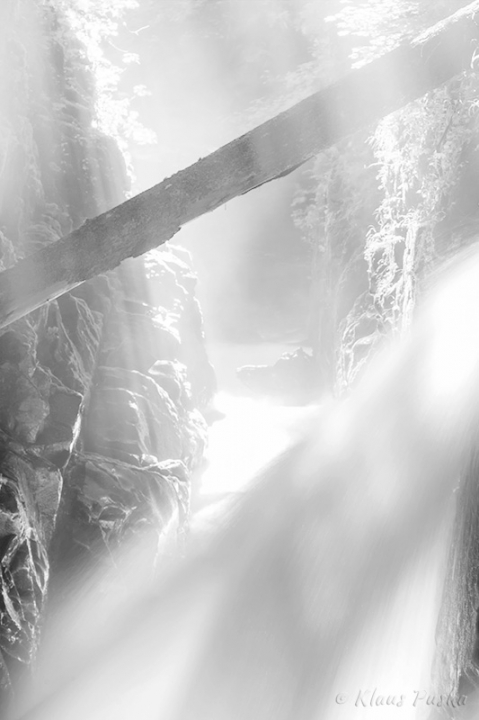
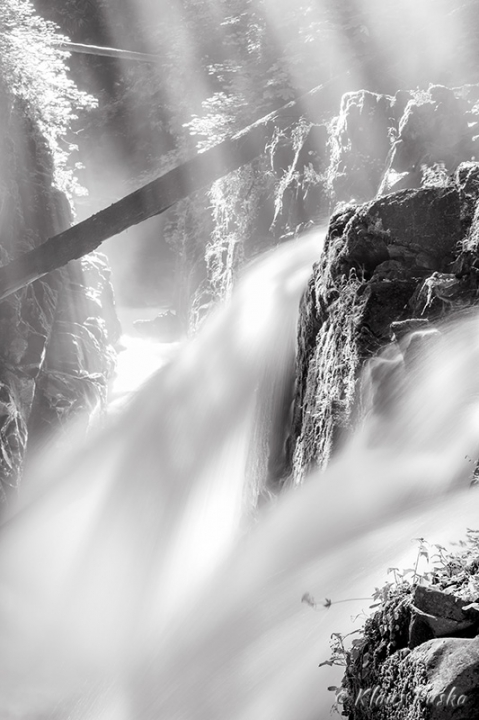
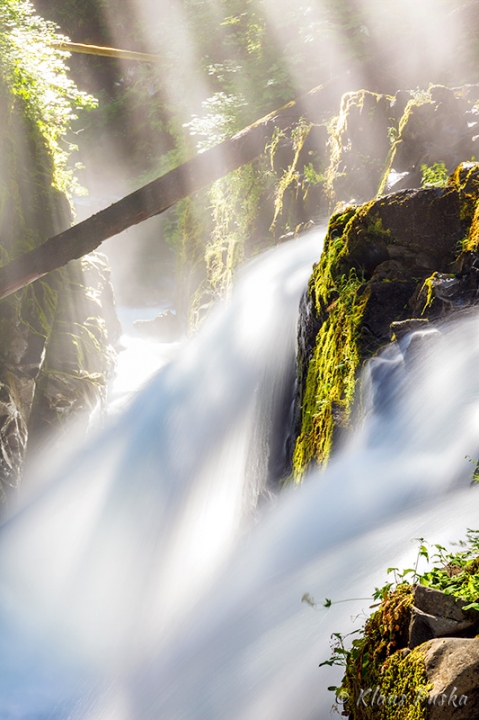
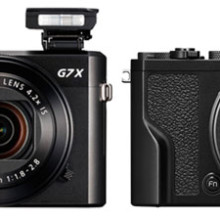
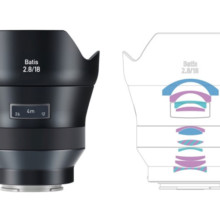
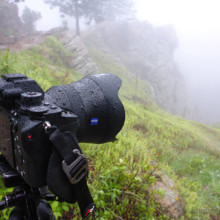
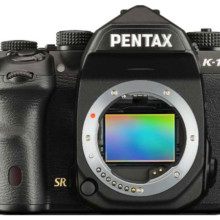
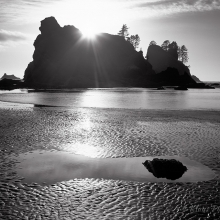
Beautiful writing, Puska. You really captured the feel of the photographs in words. I love all three of your example photos, though the first (the cropped one) and the third (the color one) are my favorites. Would these techniques work on other photos, such as a desert landscape or a picture of an animal or a person? I like to take pictures to capture the memories of the moment, but I’m no professional. Any tips on how to set up just a hand-held shot of a landscape or some people? I don’t know how to use Photoshop, so I was wondering if you have any suggestions on ways to take nice shots (and create similar effects to the ones you talked about here) without Photoshop and just with a small hand-held digital camera or phone camera? 🙂
Creating a good composition is not limited by the type of camera you use, so a phone is fine. And yes, cropping and other techniques apply equally well to photos of people and animals. As for image editing, Photoshop is by no means necessary. There are plenty of easier and cheaper options, many of them free. Unfortunately, Google recently decided to abandon Picasa, a popular free program. But both OSX and Windows come with basic image editors. That’s a good place to start.